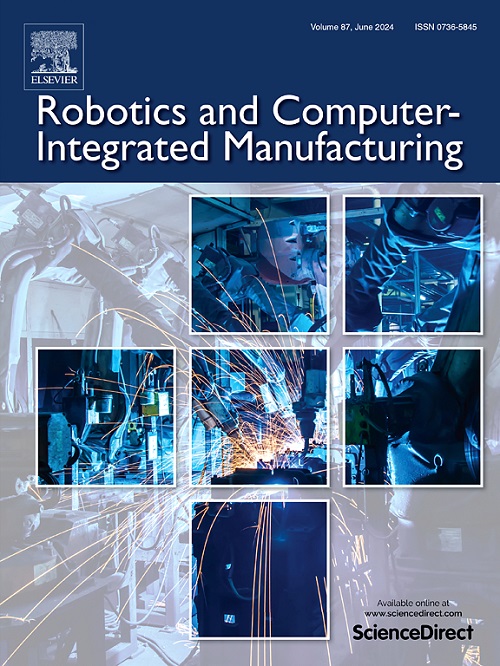Modeling flexible configuration of cell finishing for future battery production research
IF 11.4
1区 计算机科学
Q1 COMPUTER SCIENCE, INTERDISCIPLINARY APPLICATIONS
引用次数: 0
Abstract
Today, the increasing demand for battery cells requires efficient large-scale production. At the same time, cell design continues to improve regarding various performance metrics causing product feature changes, which in turn affect the process chain, equipment and process parameter design in production. In cell finishing – the final cell production section – both external cell features, related to the system components, and internal cell features, related to process protocol, are directly affected. However, the interrelations between the core domains – product, process, parameters and equipment – are hardly assessed in the current cell finishing planning and thus no systematic approach to configuration design has been established. This paper focuses on this research need and presents an approach through configuration modeling based on Modularization and Knowledge-Based Design and uses real data from factory planning. From the analyzed raw data, a structured database of product, process, parameters, equipment and their interrelations are derived. For this modeling approach, the paper first explains the conceptual framework. Then, it introduces domains and sub-domains of the database and their formalization for modeling. Subsequently, the architecture of a Two-Stage Configuration Model is explained for flexible configurations (first stage) and virtual modeling (second stage). Finally, the modeling approach is implemented for a real case of prismatic cell finishing. It demonstrates how various configurations can be systematically generated and visualized based on design requirements to advance design optimizations in cell finishing for research purposes and industrial application.
为未来电池生产研究建立电池精加工柔性配置模型
今天,对电池日益增长的需求要求高效的大规模生产。同时,电池设计在各种性能指标方面不断改进,导致产品特性变化,进而影响生产中的工艺链、设备和工艺参数设计。在细胞精加工-最终的细胞生产部分-与系统组件相关的外部细胞特征和与工艺协议相关的内部细胞特征都直接受到影响。然而,核心领域之间的相互关系-产品,工艺,参数和设备-在目前的单元精加工规划中几乎没有评估,因此没有建立系统的配置设计方法。本文针对这一研究需求,提出了一种基于模块化和知识设计的组态建模方法,并利用了工厂规划的实际数据。从分析的原始数据中,导出了产品、工艺、参数、设备及其相互关系的结构化数据库。对于这种建模方法,本文首先解释了概念框架。然后,介绍了数据库的域和子域及其形式化的建模方法。随后,解释了灵活配置(第一阶段)和虚拟建模(第二阶段)的两阶段配置模型的体系结构。最后,将该建模方法应用于棱柱体单元精加工的实际案例。它演示了如何根据设计要求系统地生成和可视化各种配置,以推进研究目的和工业应用的细胞整理设计优化。
本文章由计算机程序翻译,如有差异,请以英文原文为准。
求助全文
约1分钟内获得全文
求助全文
来源期刊
CiteScore
24.10
自引率
13.50%
发文量
160
审稿时长
50 days
期刊介绍:
The journal, Robotics and Computer-Integrated Manufacturing, focuses on sharing research applications that contribute to the development of new or enhanced robotics, manufacturing technologies, and innovative manufacturing strategies that are relevant to industry. Papers that combine theory and experimental validation are preferred, while review papers on current robotics and manufacturing issues are also considered. However, papers on traditional machining processes, modeling and simulation, supply chain management, and resource optimization are generally not within the scope of the journal, as there are more appropriate journals for these topics. Similarly, papers that are overly theoretical or mathematical will be directed to other suitable journals. The journal welcomes original papers in areas such as industrial robotics, human-robot collaboration in manufacturing, cloud-based manufacturing, cyber-physical production systems, big data analytics in manufacturing, smart mechatronics, machine learning, adaptive and sustainable manufacturing, and other fields involving unique manufacturing technologies.

 求助内容:
求助内容: 应助结果提醒方式:
应助结果提醒方式:


